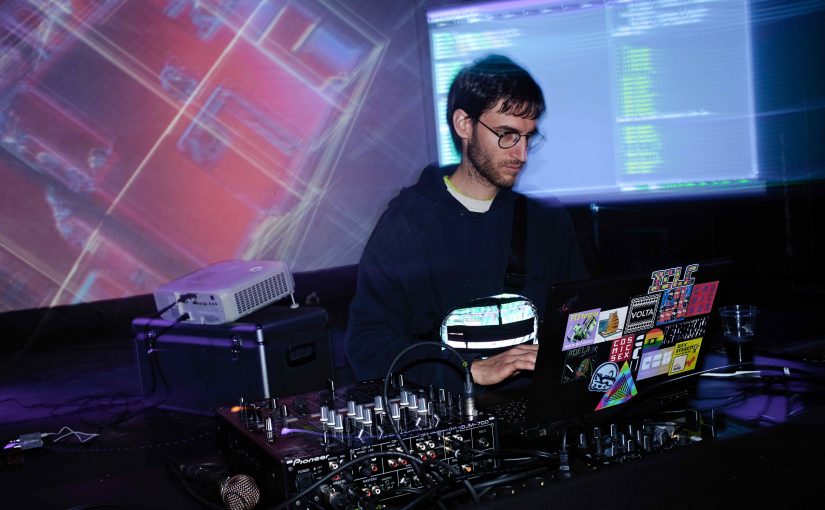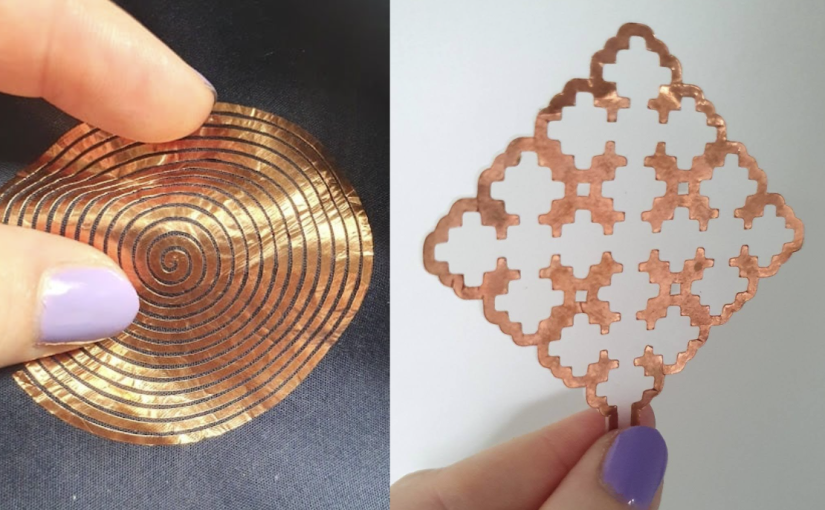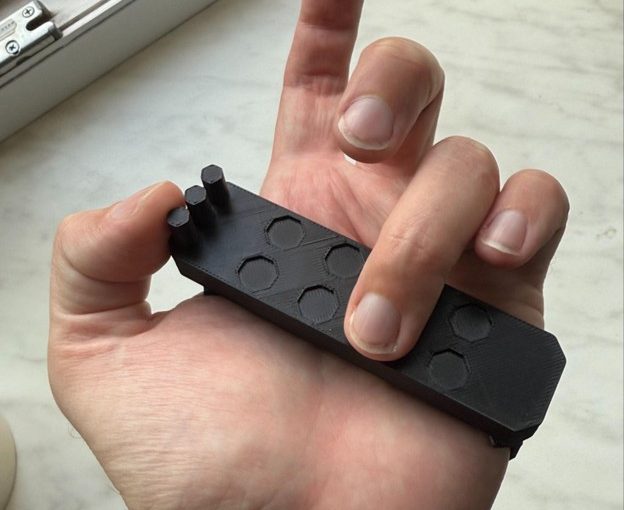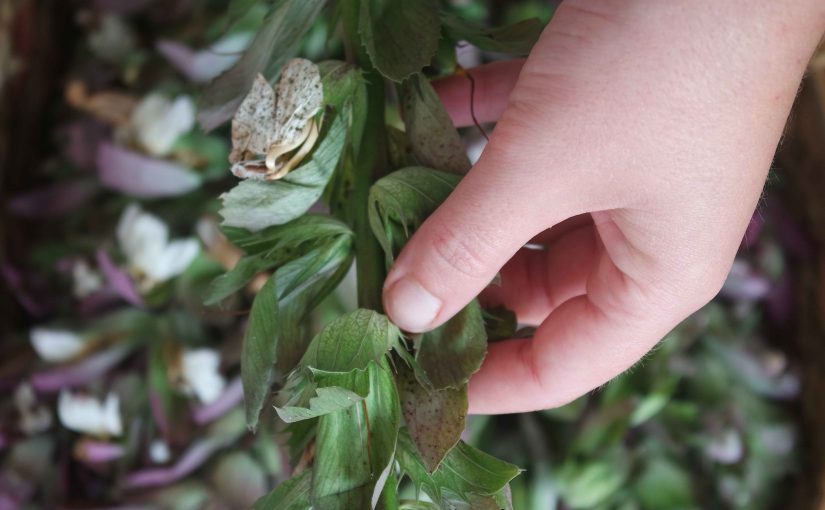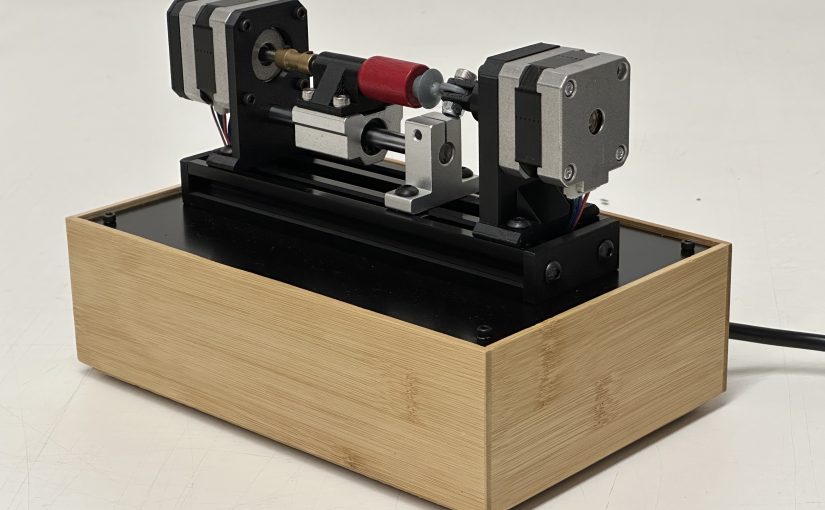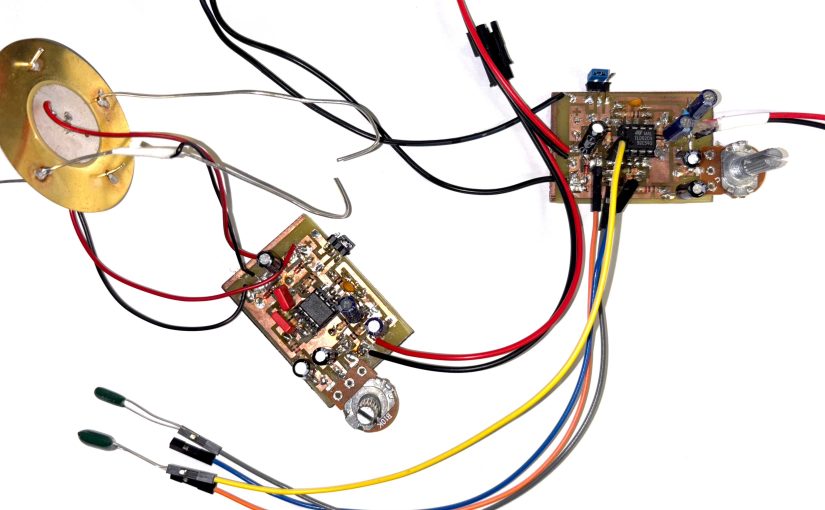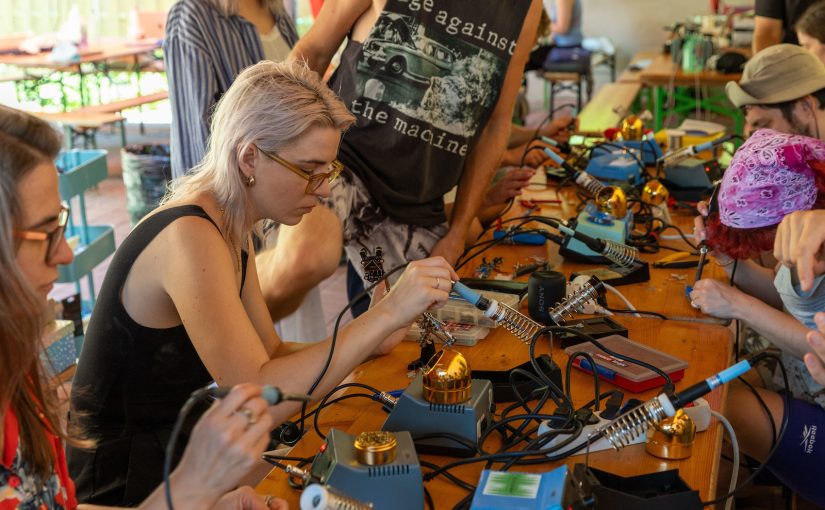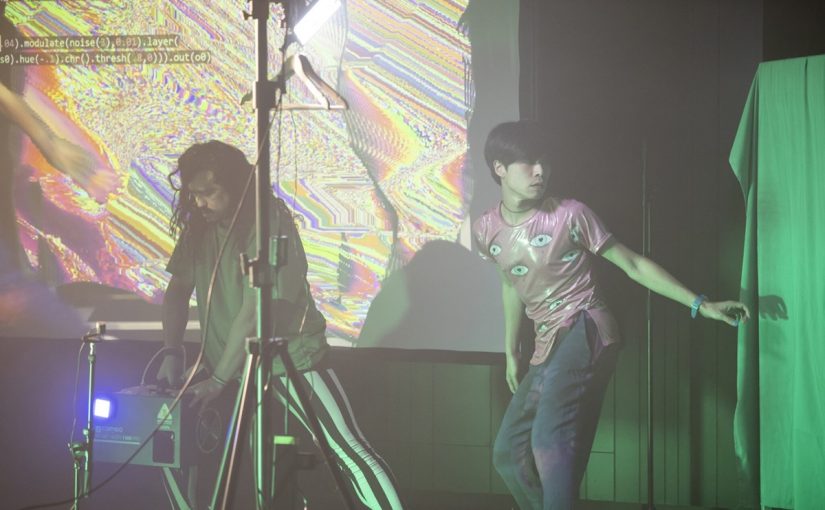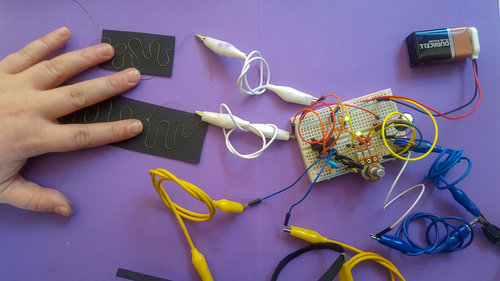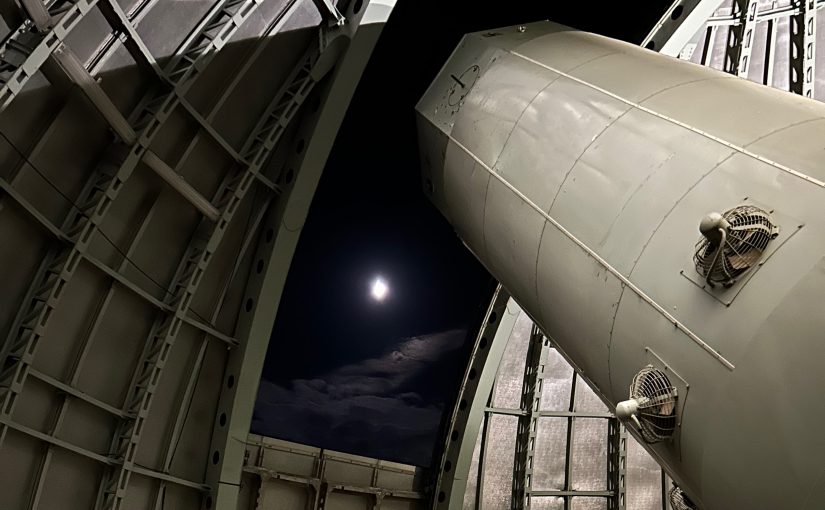Blaž Pavlica will continue developing and improving a codebase for rhythm generation, designed for live-coding performances in the SuperCollider environment. Over the past year, he developed a series of SuperCollider functions for live performances, including tools for generating rhythm patterns with musically interesting properties, functions for creating sets of compatible rhythms, and features that make real-time rhythm composition more intuitive during live coding.This year, he will further develop the collection to enable rhythm generation based on musical parameters such as evenness and syncopation. He will organize, document, and publish the codebase online in a form that will also be useful to other SuperCollider users!
Category: Participants
Flexible Bioelectronics
Imagine you could use materials like bioplastics, fabric, or kitchen foil to create your own speakers. Imagine electronics that are no longer hard and rigid but soft, flexible, and able to move with the touch.
Marisa Satsia and Jessica Stanley will be working on a project exploring the combination of soft, biofabricated materials–such as bioplastics–with flexible electronics and e-textiles. The aim of the project is to develop a series of prototypes that investigate how the flexibility and vibrational properties of these materials can be used to create bio-speakers and other electronic membranes or surfaces with embedded circuitry.
As part of their experimentation, they will be making printed circuit boards (PCBs) using DIY etching techniques or a small, portable vinyl cutter to shape tin foil. These circuits will be used to build amplifiers that support the functioning of the bio-speaker prototypes.
Over the week, Marisa and Jessica will focus on hands-on prototyping, testing material combinations, and refining their fabrication methods. At the end of the week, they will host a workshop to share the techniques they used. The workshop will also include a collective brainstorming session to explore potential directions and applications for future developments in flexible bio-electronics.
Wireless gestural controller PALM 01
PALM 01 is a wireless gestural controller (Bluetooth, Wi-Fi) designed for a wide range of applications. It is designed so you could still use your hand for other common tasks while it is attached to your hand (such as typing, playing keyboard, tweaking knobs etc.). It features a gyroscope and 2-3 touch points for each finger and adjustable ergonomics.
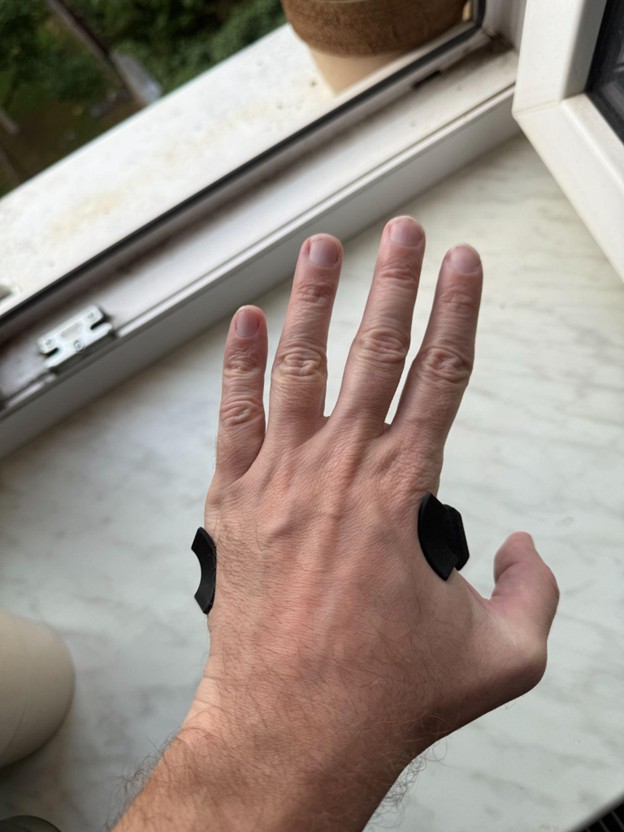
The interaction with the touch points sends out data on its own or provides a context for sending out data from the gyroscope. For instance in music context when engaging your index finger you can control the cutoff filter with the X axis of the gyroscope and resonance with the Y axis, whereas engaging the middle finger can control the delay time and feedback with the XY coordinates.
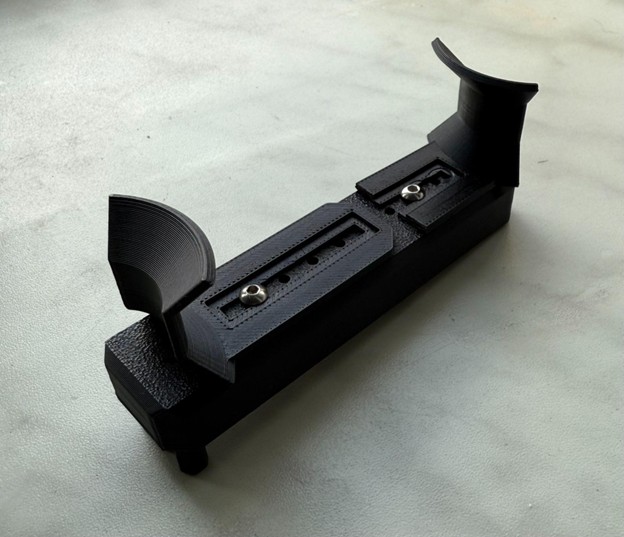
The pictures show a mockup that serves as an ergonomic proof of concept. The circuit board and enclosure will be designed in the coming weeks. The circuit board and enclosure are currently still in development and will be done in coming weeks. Václav will lead a workshop at PIFcamp where participants will be able to build their own controler!
Developed by Václav Peloušek, @toyotavangelis
Botanical Bodies
Botanical Bodies a project by Diana Aires focuses on researching, collecting, and engaging with the landscape of Triglav National Park, drawing attention to performative gestures between the human and botanical body. The project involves exploratory walks, installations, and an introductory workshop on natural dyeing techniques.
Assuming the constant transformation and exchange of matter within the landscape, the project aims to trace the visible and invisible stories of local plant life–getting to know plants and recognizing their specific characteristics. These interactions form the basis for fostering a sensory and critical understanding of a landscape that has been evolving for thousands of years, bringing into focus the tensions between ‘invasive’ and ‘autochthonous’ species.
The outcomes of this process will come togehter as an in situ installation that brings together natural dyes, dried plants, textile impressions, process documentation, and other traces. Creating a dialogue between traces and the landscape, open to interconnect with other artistic practices marked by movement and wind.
Chirping Machines by So Kanno
I love birds. Whenever I’m walking outside and hear birdsong, I cock my ear to listen. It’s been a few years since I started paying attention to their voices, and little by little I’ve learned to tell species apart by sound—and in doing so, to feel the passing of the seasons.
I’m fond of the voices of small creatures. The owner of an enchanting chirp is hard to spot. A crow’s call isn’t all that appealing and the bird itself is easy to find, but a nightingale that sings beautifully is much harder to pin down.
Other animals whose calls I enjoy are frogs and crickets, and they, too, are difficult to locate.
Since ancient times, instruments that imitate these animal sounds have existed—what we now call folk instruments. Long before instruments could change pitch precisely or play harmonies, such tools were used to communicate with animals or to express a bond with them in rituals and festivals.
Why do the animals whose sounds I love make those sounds? The Japanese researcher Toshitaka Suzuki discovered linguistic structure in the calls of the Japanese tit: they carry on conversations with grammar. Frog choruses are thought to mark territory, yet in field recordings of Australian frogs captured by the artist Felix Hess, two frogs can be heard skillfully adjusting their timing so their calls don’t overlap—fascinating to hear. For them it may be a territorial display, but to me it sounds like experimental music generating intricate rhythms.
It’s only natural that animals respond to recordings of their own calls, provided the frequencies fall within their hearing range; playback is routine in ethology. But do they ever react to the sounds of instruments that only resemble their calls to human ears?
At the very least, an AI birdsong detector didn’t respond to the sound of a bird-call whistle. I wonder if animals in the mountains would react somehow. What is at the heart of their acoustic communication—frequency, timing? Within the same species? Between different species? Does the predator–prey relationship change things?
I’m neither a bird nor a frog, so I can’t know what mood they’re in or what meaning their sounds carry. Yet as I imagine it, I design sound-making robots and devise algorithms. The robots are programmed to produce sounds in a way that, in my own way, lets them “become” those animals.
Text and photo: So Kanno
Get Ready to Amplify: Dive into DIY Electronics with Piezos!
Join Alevtina Senik for a beginner-friendly DIY electronics workshop exploring the creative possibilities of piezo elements. Participants will build a small preamp on an etched PCB, based on a Ralf Schreiber’s schematics. Along the way, they’ll delve into the basics of the piezoelectric effec its function and potential in artistic practice, while learning (or refreshing) soldering skills and experimenting with various capacitor values to hear how they affect the sound.
Everyone will leave with a fully functioning preamp board, ready for further sonic exploration, recording, or circuit-bending adventures. A great first step into the vast, swampy world of analog sound!
Alevtina Senik is a media artist currently based in Bremen, Germany. With a background in liberal arts and sciences, their practice is rooted in anthropological interests and expands through a growing engagement with technological systems, DIY practices, and material exploration (such as ceramics).
“Sonifying frequencies” Vol. 2
The open-source electromagnetic spectrum listening device workshop is happening again!
Elektrosluch Mini City is a DIY kit of Elektrosluch, an open-source device for electromagnetic listening. It allows one to discover sonic worlds of electromagnetic fields, surrounding our every step. Just plug your headphones & explore. Concept & electronics were developed by Jonáš Gruska.
Elektrosluch Mini kit is easy to assemble ans it’s a very good start to pick up your basic soldering skills and start reading a schematic. Bernhard Rasinger will guide you through the workshop. Be sure to bring headphones with a TRS connector!
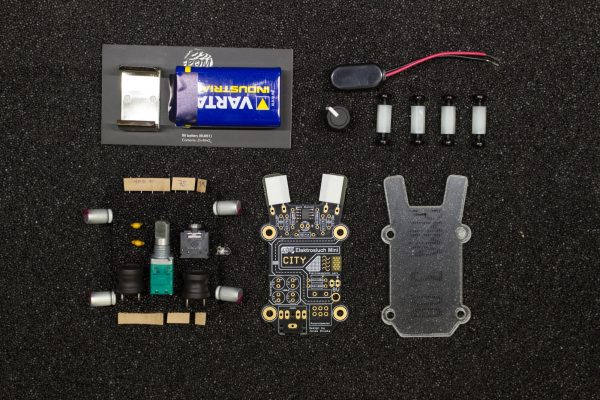
Dance, body expression and live coding
Dancer and choreographer Jorge Guevara, driven by a desire to bridge the gap between coding (tech) and embodied practices (dance), will introduce his collaborative project utilizing Hydra j.s., a live-coding platform for visual art, in conjunction with dance and body expression. He has been crafting this fusion together with Naoto Hieda. The unique setting of PIFcamp provides an ideal space for them to explore the interplay of code and corporeality, seeking connections with nature and collaborating with fellow enthusiasts. During the camp, they will use the opportunity to experiment with a new workshop setup they are preparing for their upcoming performance.
The workshop is based on a twofold approach:
- Hydra Introduction (1-2 hours): Dive into coding with Hydra, creating abstract images and “body filters” using our user-friendly web interface. No coding experience required.
- Embodied Practice (1-2 hours): Explore embodying objects and connecting with nature through performative practices. We may bring in laptops too, and try the code from the previous workshop, which will happen organically.
These sessions offer a seamless blend of technical (live coding) and body practices, fostering a deeper connection with ourselves and the natural world.
The workshop will wrap up with a feedback session, offering a chance for reflection and sharing experiences. The input of the participants will be invaluable for their coding-corporeal practice, which includes the performance at Kino Šiška in Ljubljana on 30 August 2024.
Photo: Urška Boljkovac/Kino Šiška
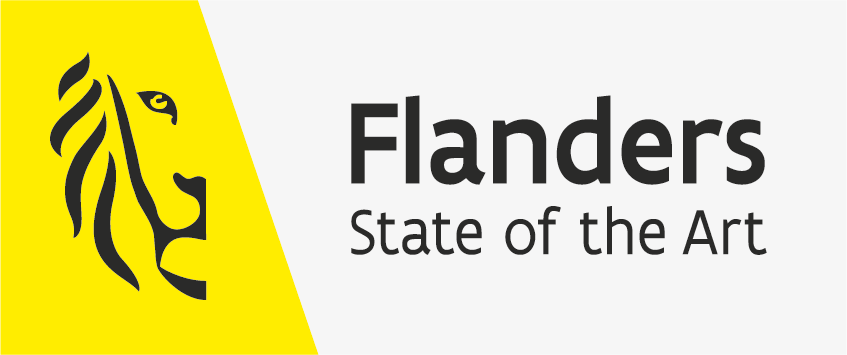
With support of Flanders.
Rainy day synths
Do you like synthesizers but don’t want to compose your own music? And do you also live in a rainy country? Jessica Stanley is a researcher working with e-textiles and has a solution for you: a raincoat that generates sound when raindrops fall on it. At PIFcamp, she will experiment with different flexible and textile moisture sensor designs, using a mix of hydrophobic (waterproof) and hydrophilic (absolutely not waterproof) fabrics to move water through sensors and create interesting sounds. These will then be connected to simple analog synthesizer circuits and integrated into a raincoat to make a garment that creates its own soundtrack during a walk in the rain.
Jessica is currently a postdoctoral researcher based in the UK and works on medical research projects combining textiles and electronics. However, she is also interested in how textiles can make interesting interfaces for electronic devices and in projects that make electronics accessible to a wider audience. This will be her first time at PIFcamp, and she is keen to collaborate with others who have more experience on the audio electronics side of things, or to share her e-textile knowledge with others.
In search of deep time
Every time we look into the starry sky, we are looking into the past. The further we go in observing space, the further back in time we travel. Astronomical observations of deep time are based on the spectroscopy of very distant objects that emit or absorb visible light, such as stars, galaxies, and black holes. With microwave emissions, cosmic rays, and gamma-ray bursts from supernovas and other transient objects, we can also trace distant times, but these emissions are better detected from outer space.
In her current research project, which started during the Astronomia residency in the mountains of Portugal and at the Haute Provence Observatory in France, artist Katarina Petrović is exploring material and immaterial ways of journeying into deep cosmic times. During PIF, she will look for traces of deep time detectable and collectable on the ground, break sunlight to observe the solar spectral absorptions in real time, and attempt to record cosmic rays using CCD image sensors. She will use a small magnetic loop antenna to search for and listen to the cosmic radio noise coming from the center of the Milky Way, and look for stardust or micrometeors – very small meteor particles left over from larger pieces burning up in Earth’s atmosphere.
Katarina Petrović (NL/RS) is an artist and researcher working with language, computation and various physical phenomena including sound, vacuum, light and radio. She creates systems, procedural works that are presented as modular installations in an online and offline space, using media such as generative text, poetry, sound, software and performance. She holds a MMus degree from ArtScience Interfaculty, Royal Conservatoire and Royal Academy of Arts, The Hague and an MFA from the Academy of Fine Arts, Belgrade. Katarina is an affiliated researcher at the trans-disciplinary research Centre Leo Apostel, Vrije Universiteit in Brussels and a guest lecturer at the postgraduate School of Thinking, VUB and ArtScience Interfaculty in The Hague. She has been the managing director of Trixie, an artist run space in the Hague since 2021 and is co-initiator of ArtScience Forum platofrm and Femkanje – art radio in Belgrade.
